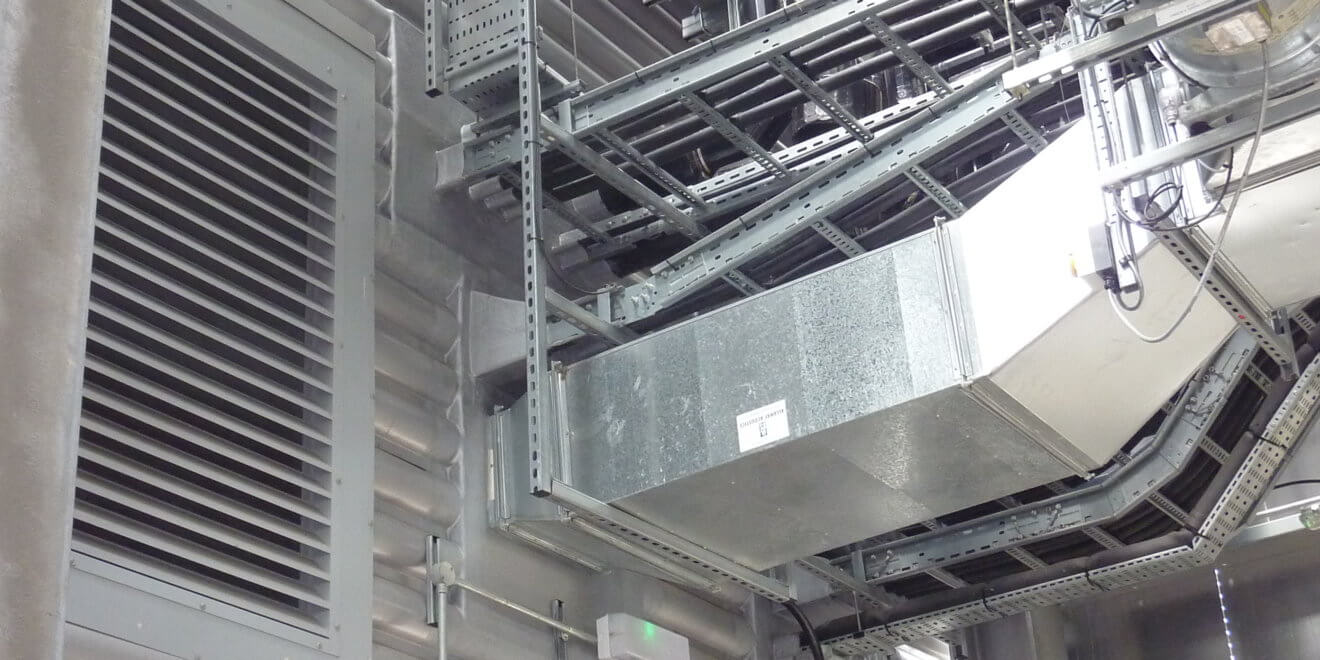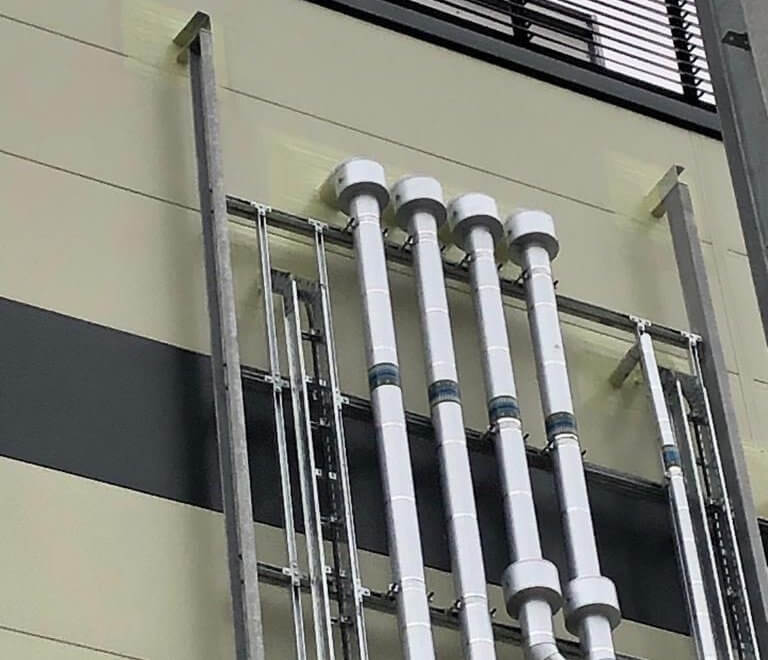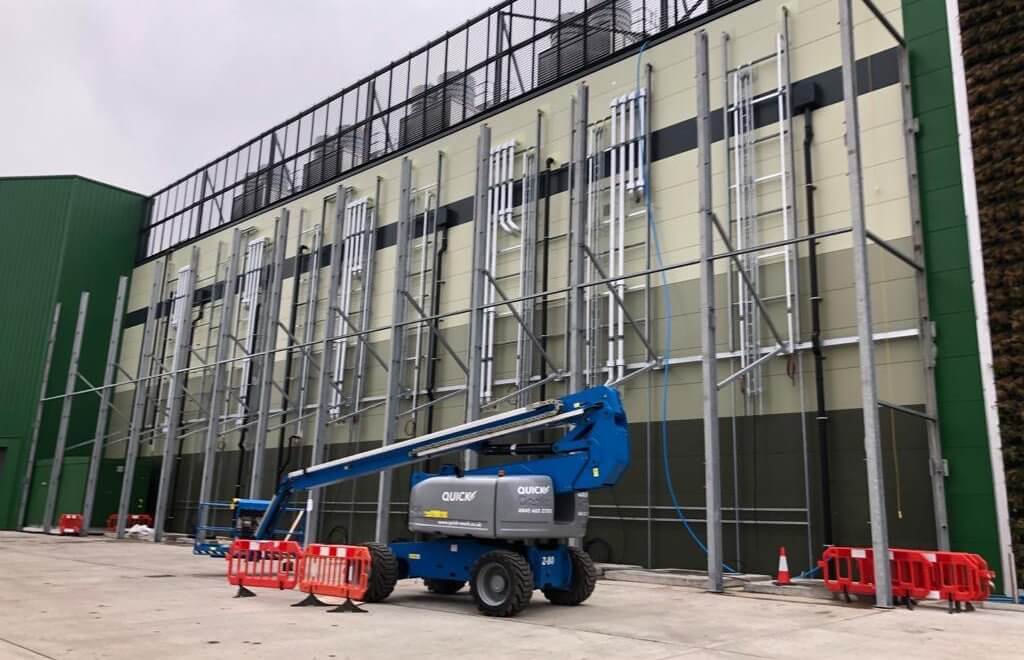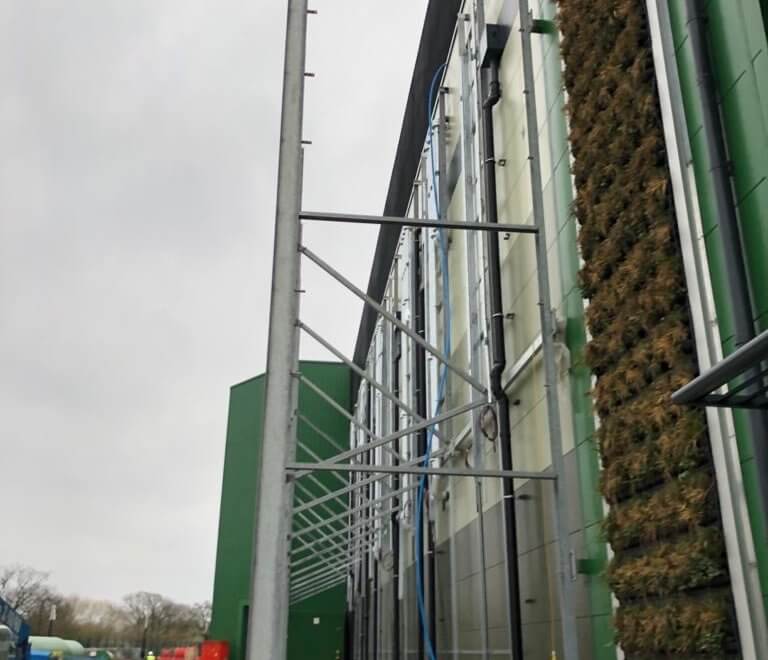When it comes to data centres, continuity is key – they need to keep running no matter what’s happening outside. Heavy snow, heatwaves, driving rain or hurricane-force winds, it doesn’t matter: data centres can’t stop, or the results could be terrible for the businesses and services that rely on them. That’s why ensuring reliable and durable weathering for data centres is so important.
So, what needs to be done to keep the British weather outside so the servers inside can keep running? Let’s look at the four most complex waterproofing details for data centres.
1. Roof penetrations for cable trays
Between electrical distribution and data, there are a lot of wires and cables that go into and come out of a data centre. These are typically run on cable trays and often enter the building through a roof penetration.
Due to the open nature of them, weatherproofing cable trays can be tricky. It usually requires a combination of upstands and access risers, along with careful waterproofing and expert knowledge to ensure that wind uplift does not become a problem.
2. Vertical wall penetrations for cable trays
If the cable trays don’t enter the building through the roof, they probably enter through a vertical wall penetration. As mentioned above, weatherproofing cable trays is difficult, since the trays are open and the bundles of cables they hold can be oddly shaped.
Depending on project requirements, the penetration can be protected using weatherstop units – these are box-like structures on the outside of the building that create a protected entrance for the cable trays. In other situations, a weatherproof seal may be applied to the area around the cables to prevent any rain or wind ingress.
3. Service risers for HVAC equipment
Cooling and climate control are hugely important for data centres – all those servers are pumping out a lot of heat and keeping everything cool requires a lot of HVAC equipment and ductwork, as well as ventilation terminals. That equipment is typically found on the data centre roof, using service risers to connect them to the building below.
HVAC plant for data centres is usually very large and heavy, so the roof penetrations will need to be structurally sound. Custom-made upstands can provide support and improve drainage around the machinery. Reliable seals around the ductwork and vents are also essential to prevent leaks or potential damage caused by rainwater ingress or heavy winds.
Safe access to the HVAC must also be carefully considered, and any weatherproofing should be durable enough to withstand foot traffic.
4. Roof access hatches
Speaking of access, roof access hatches are another important area of consideration for data centre weatherproofing. These hatches make it easy for workers to access the roof, either to attend to the HVAC equipment and other machinery found up there, or to carry out other maintenance.
The complex detailing around access hatches typically involves an upstand for structural support, as well as weatherproofing where the upstand and roof surface come together. The roof access hatch must also be structurally sound and reliable, as workers will be passing through it, with the added hazard of them working at height. This means that the overall structure and its weatherproofing should be free from trip hazards, and, again, capable of withstanding foot traffic.
Complex detailing for data centres: Jones and Woolman UK
At Jones and Woolman UK, our team has extensive experience in carrying out all sorts of building penetration and roof weatherproofing projects, including several data centres. We can provide a comprehensive range of services, from site surveys to design, build, installation and maintenance, and we can also carry out commercial roof repairs where required.
To learn more about complex detailing for data centres, and how we can help ensure your facility is fully weatherproofed, please get in touch here or call us on 01922 712111.



